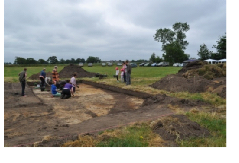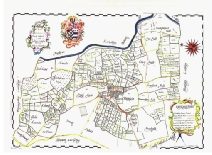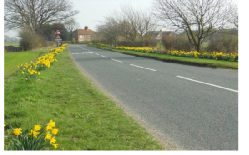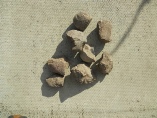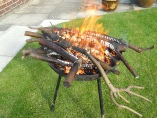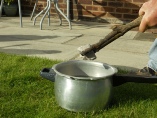‘POT BOILERS’
During three seasons of excavation at Parkhouse Farm and four at West End Farm, Hemingbrough, Beech Farm at North Duffield, Hard Moor Farm and Cannon House Farm at Wheldrake we uncovered hundreds of glacially worn cobles in Iron Age contexts. Almost all of these had fresh-looking fractures considering that they were 2000 plus years old. This collection is a typical example. Nothing like this had been found in field-walking so these cobbles had remained sealed in the contexts from the time they were deposited. There is no local outcrop of rock that could be the source of the material so where did they come from? Were they lying around in the landscape, perhaps moved here by the glaciers 15000 years ago? If they were, there certainly is not any now. Given that these ‘pot boilers’ had been in use for thousands of years, could this resource have dried up? It would be a huge investment in time and energy to fetch them to the site. We have considered that they might have come from the Escrick Moraine which is only 5 miles or so north. The material from which they are made has been identified as red Sherwood sandstone which I established at the quarry at Hemingbrough is 60 feet below the current land surface today. There are outcrops of Sherwood sandstone on the Selby ring road on the other side of Selby and it also makes up the core of Brayton Barff. These cobbles are mostly grey in colour, the red having leached out over time. Close examination of the surface of these stones showed considerable surface cracking and so they had clearly been exposed to heat. That would fit the interpretation of pot-boilers. The first time I encountered something similar was when I was volunteering on the new University of York site at Heslington. Our community excavation site was on the York Moraine and I kept finding almost round cobles of assorted rock types split almost exactly in half. My enquiry of the professionals got a response of ‘natural’ but that did not convince me. The following year, on the same site I found that the term ‘pot-boilers’ was now being used to describe them.
It has been said that pre-historic tribes created pottery (see later) by firing the clay in clamp kilns, essentially holes in the ground, or in bonfires and that the pot was hand-made and poorly fired as a consequence. The pots could not withstand the flames of the fire so to boil water, they heated up the cobbles and then dropped them into the cold water. The extreme temperature change caused the cobbles to fracture. Cooking was slightly different as the pot was put in the hot ash and cinders from which flames had died down but this was not hot enough to boil water.
One interesting side issue is that in Trench 1 at Cannon House Farm in 2019, a training trench of which I was always in charge, giving tuition to children and any newcomers, the ring-ditch that I was excavating was packed jam full of pot boilers, broken pot, bone and animal teeth. In fact, half of all finds from this site came from Trench 1. Why were all these pot-boilers apparently just discarded? I ventured to suggest that as this site was a later site origin than the others we had excavated, Roman technology had taken hold, pots were now wheel-turned and fired at a higher temperature and could therefore stand the heat of the flames so the pot-boilers became obsolete. My professional colleagues cried ‘not proven’ but I stick with my hypothesis so prove me wrong.
So how effective are pot boilers? I decided to find out.I called into use an old cast iron barbecue and lit a fire. When it was up to heat I dropped in the cobbles and left them to heat up. I then extracted the stones a couple at a time using sticks as tongs and dropped them into the water in a saucepan and lo and behold instant boiling water. Extremely efficient though the water was very murky but then, perhaps, the Parisii or Brigantes, or whichever tribe inhabited North Duffield were not too particular.
